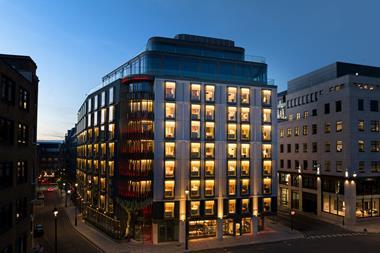The bad news is that the finance market may have peaked and the blissful not-too-hot, not-too-cold ‘Goldilocks’ phase is over. The good news is that a crash is highly unlikely, delegates heard at Savills’ 28th annual financing property summit which was held in London on Tuesday.

In the UK margins have started to increase and LTVs have started to decrease, due to the stage of the cycle, increased lenders’ costs and the impact of regulation. But the market is healthy and there is evidence that the lessons of the past have been learnt and that mistakes are not being repeated.
The list of good news is even longer, according to Savills: regulatory reform has turned out to be a positive force because it has led to a much more diversified and better balanced lending market. In the last three years 180 new lenders have entered the market, 36 in the last 12 months alone.
'We are operating in a dynamic and fast-changing environment,’ said William Newsom, senior director of valuations at Savills.
UK banks’ share of the market has fallen from 70% in 2008 to 34% in 2015, with a further decline to 30% forecast for this year. That despite the fact that Royal Bank of Scotland (RBS) was the biggest lender in the UK in 2015. All in all, lending to property now represents only 8% of total lending, a level last seen in 2002.
In the meantime, insurance companies have grown their share of the market to 16% and will reach 18% by the end of 2016, while German and North American banks have a share of 13% each.
A particularly interesting development has been the growth of alternative lenders, whose 9% share of the market is set to grow to 13% by the end of the year. There are over a hundred in the market now, and Savills calculates that they are set to lend around £7.5 bn (€9.6 bn) by the end of the year.
Many property owners now prefer to borrow from alternative lenders who have built a reputation for being faster, experienced and offering greater certainty of delivery. ‘Borrowers happily pay an extra 50 basis points (bps) for their can-do attitude and established track record,’ said Newsom.
Debt finance for speculative development continues to be extremely scarce, which is a good thing, but with the cost of money at a record low and the yield spread high, property continues to be very financeable. Gross lending volumes in 2015 reached £53.7 bn, a 19% increase on 2014.
Prime-secondary spread remains wide
There are high levels of development activity but no signs of overheating, as the lessons of the financial crisis have been learnt. One indication is that the prime/secondary spread is still wide, said Mat Oakley, director of commercial research at Savills: ‘It is a healthy sign because it shows that investors are accurately pricing risk.’
In 2007 two-thirds of lenders thought an 80% LTV was no risk, but, said Newsom, ‘happily, that is inconceivable today’. LTVs have decreased from 87% in 2015 to 83% this year. ‘We do not think it is too hot, as with the low cost of money it can be comfortably achieved,’ he said.
In this positive scenario the main risk to watch out for is an unexpected interest rate rise that would trigger an increase in the cost of borrowing. ‘Once the cost of money goes up it is a whole new paradigm,’ Newsom said. ‘Some businesses are being built around the premise that today’s low-cost environment will continue indefinitely but, frankly, it won’t’.
Other pitfalls to avoid are over-optimistic rental growth forecasts and ‘fancy financial structures you do not fully understand’. The best advice remains ‘stick to the fundamentals’.









